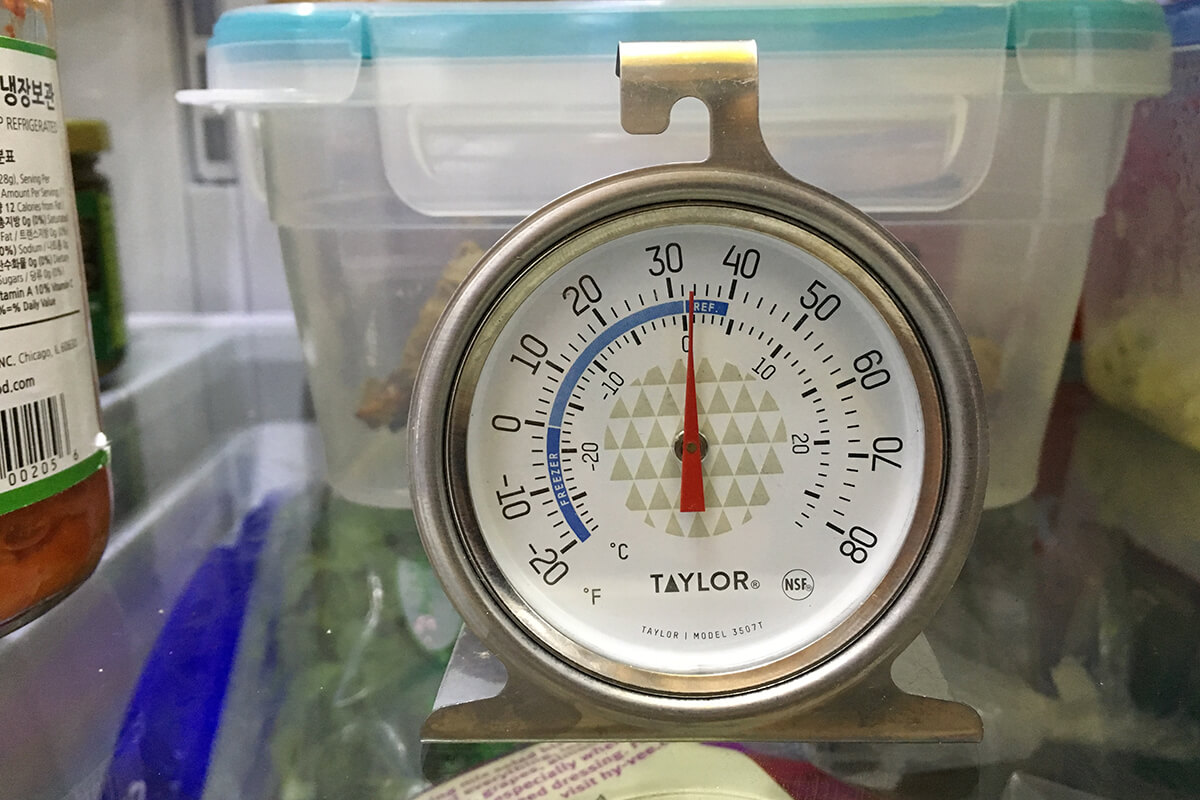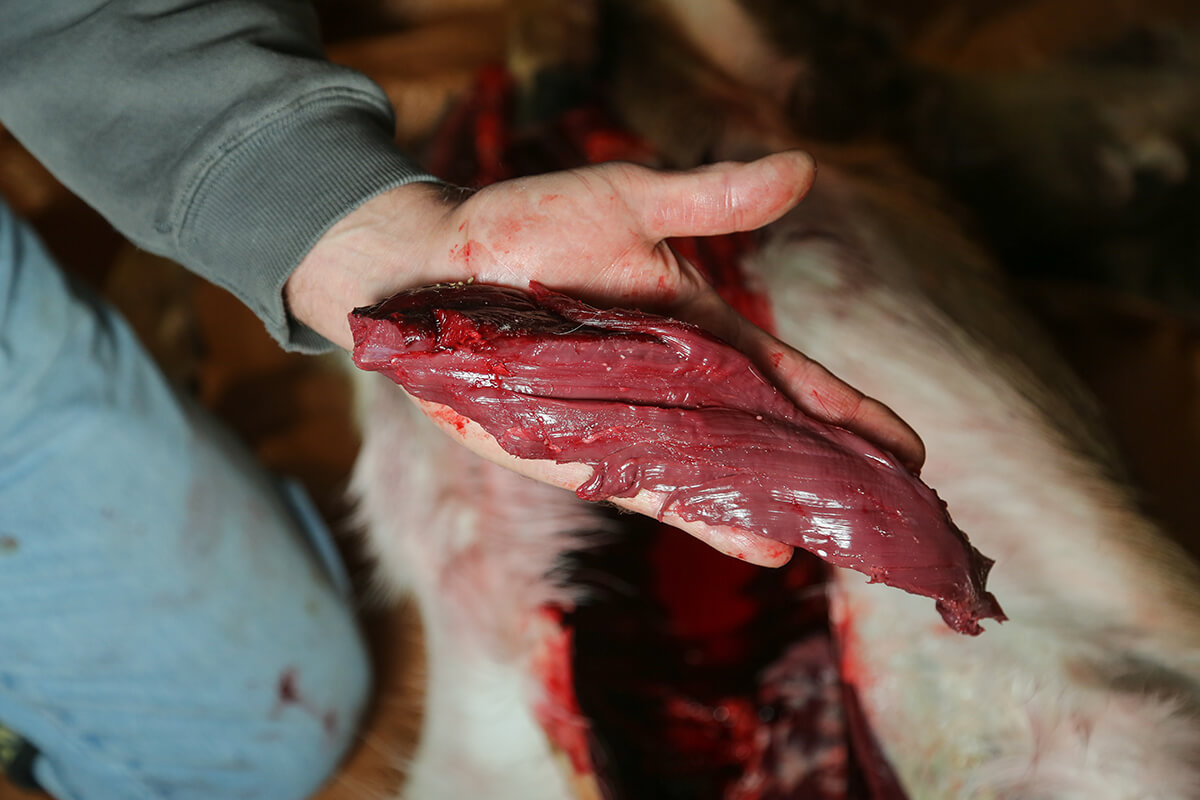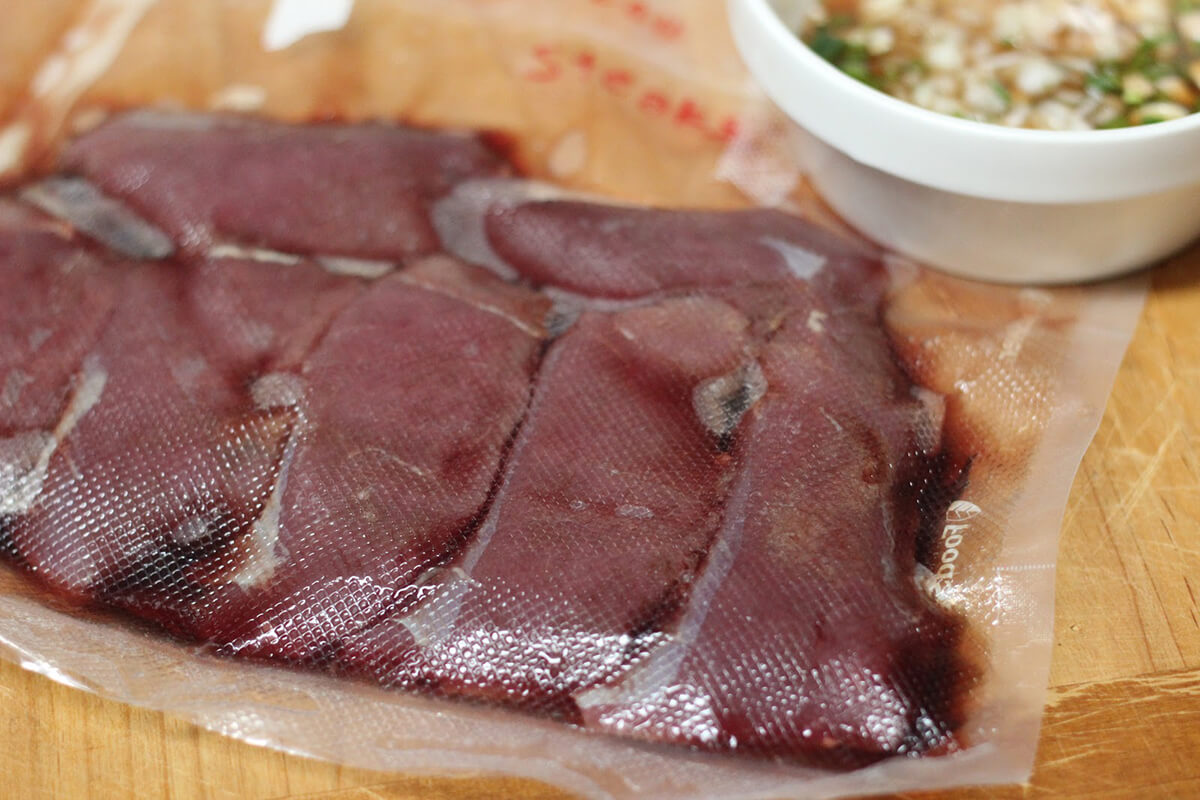
After wet aging your deer, cook it into something delicious, such as this venison eye of round with elderberry pan sauce. (Photo courtesy of Jenny Nguyen-Wheatley)
Dry aging may be getting all the attention, but don’t overlook wet aging as a way to tenderize and bring out more flavor in venison. In fact, most grocery store meat has been wet aged, and you can use the same technique on deer. I find that just a few days can help make a difference.
Table of Contents
Benefits of Wet Aging
Aging is the process in which the natural enzymes in an animal’s muscles break down connective tissues; this helps to tenderize the meat and develop its flavors. While you won’t get the intense flavors characteristic in dry aging, there are other benefits to wet aging.
- Wet-aged meat does not lose moisture and there is no rind to trim off, therefore resulting in no loss of weight and meat.
- Dry aging should be done with primal cuts only, while wet aging allows for cuts of any size.
- Wet aging does not require any special equipment – a cold refrigerator, refrigerator thermometer and vacuum sealer are all you need.
- Takes up less space than dry aging.
- Can be done after the meat has been frozen.
- The entire animal does not have to be wet aged all at once. Thaw out meat and wet age as you plan your meals.
- While wet aging does not concentrate flavors, it does help to tenderize and bring out delicate flavors that has yet to develop in freshly killed venison.

Cons of Wet Aging
- You cannot wet age meat for nearly as long as you can dry age meat. The moist environment in wet aging will eventually turn to rot.
- There is no moisture loss in wet aging, therefore no flavor concentration.
- Mold is not a factor in wet aging, which is credited for bringing out nutty, cheesy notes possible in dry aging.
Prepping Venison for Wet Aging
Before aging meat, be sure to follow best practices for handling meat in the field. Because aging requires you to hold meat at temperatures above freezing, any cross-contamination can quickly turn into unwanted bacterial growth.
Remember to use clean tools and keep the meat away from dirt and debris. Also, avoid cutting into any scent glands and puncturing intestinal organs. Keep the meat cool at all times.
If you accidentally make a gut shot, use two sets of gloves and knives: one set to handle meat that you suspect may have come into contact with gut material and the other to handle meat you are positive did not. Keep both piles of meat separate to avoid cross-contamination. Only age meat that you know, without a doubt, did not come into contact with intestinal content.
Cuts to Wet Age
Cuts of venison used for grinding or stew do not benefit from aging. Freeze and use these cuts as usual.
For cuts that you plan on searing, grilling, sautéing or smoking, wet aging can be useful. The cuts I recommend for wet aging are the tenderloin, backstrap, bottom round, top round, eye of round and in younger animals (under 2½ years old), the sirloin tip.

Vacuum Sealing
Vacuum-sealed bags keep out oxygen, which slows down bacterial growth and prevents discoloration on meat. These bags also hold in the meat’s juices, which contains enzymes that will help break down the meat, thus tenderizing it.
Before you start vacuum-sealing meat, make sure there are no stray deer hairs or debris on the meat. If the meat is wet, pat it dry with paper towels—excessively wet meat will not vacuum seal correctly. Next, break down meat according to how much you and your family can eat in one sitting, and then vacuum seal into individual packages. At this point, freeze to wet age later or wet age all of the packages now.

To Wet Age
Buy a refrigerator thermometer to make sure your fridge is cooling accurately. Adjust the temperature to somewhere above 32 but below 40 degrees Fahrenheit—I shoot for 35 degrees. Place desired vacuumed-sealed packets of venison on the lowest – coldest – shelf, and leave it alone for a few days to as long as 3 weeks.
Tenderloins: How long you wet age meat will depend on the cut and your taste. Located inside the body cavity and just underneath the rib bones, the tenderloins do little work and therefore come out tender already. I mostly wet age tenderloins for flavor rather than texture; three to four days will usually suffice.
Loins: For backstraps, wet aging time is determined by the age of the deer. If the loin came from a doe or young buck, I shoot for at least five days to a week of wet aging. For older deer, I recommend two weeks. You could wet age the backstraps longer, but being an already tender cut, you could risk the meat becoming mushy. Again, it depends on personal preference, so experiment to see what works best for you.

Rounds: The cuts that may benefit from longer wet aging are those from the hindquarters of the deer, including the rounds and sirloin tip. On a 1½-year-old deer, you may not have to wet age long at all – perhaps a week. On older deer, I would shoot for 2 weeks. On mature bucks – I typically turn these animals into hamburger, but if you want to try wet aging, 3 weeks would be desirable.
There are hunters who have successfully wet aged venison for a lot longer, but I personally have not tried it.
After wet aging, cook the venison or freeze it to enjoy later.











































